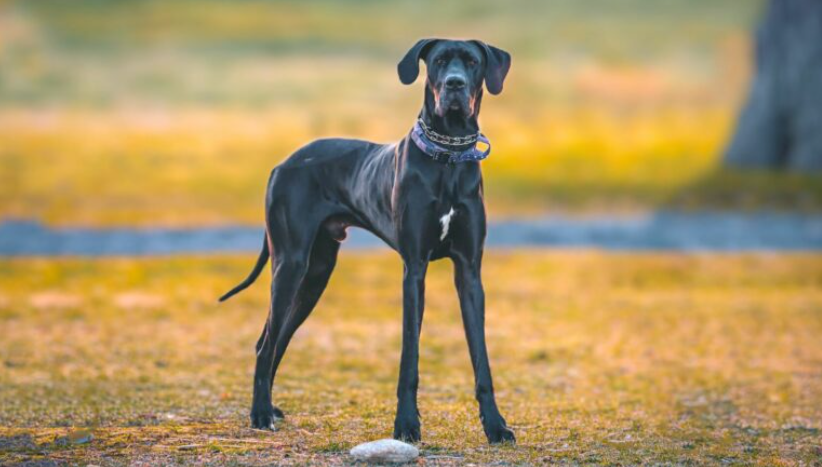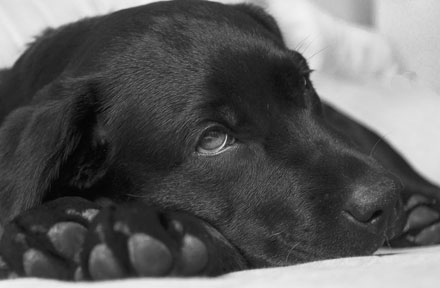Apr 17, 2025
Author:Amanda Lyu
Every Dog comes in all shapes and sizes. It depends on someone's preferences and what type of Dog they like the most. Short-legged dogs are cute for some, but long-legged dogs make the Dog look more elegant and majestic. However, there are a lot of problems attached to long legs. So many dog owners have a question: Are Dogs with Long Legs more Susceptible to Leg problems?

In short, yes, Dogs with long legs are susceptible to leg problems. They are more prone to diverse leg-related issues. However, it is not only about the length of the legs; other factors, like breed genetics, can also cause leg-related issues.
So, let's find out whether dogs with prolonged legs are more susceptible to leg problems; if they are, what are the reasons, and how can you prevent it if you own a dog with long legs?
Some breeds have long legs but possess many abilities, such as speed, agility, and power. Their long legs give them many advantages; they excel at running, jumping, and stamina.
Some of the breeds known to have long legs include
● Greyhounds
● Whippets
● Salukis
● Great Danes
● Irish Wolfhounds
● Borzois
● Afghan Hounds
● Dobermans
● Standard Poodles
● Weimaraners
Because of their long legs, these dog breeds are known for diverse abilities. However, they risk some problems because of their long legs and are especially prone to injuries.
Long-legged dogs have very different body structures. Their limb bones are more extended, joints are exposed, and their weight distribution differs significantly from that of short-legged dogs.
● Long legs can increase stress on other parts of the body, such as
● Joints like hips, knees, ankles
● Ligaments get the most body pressure, especially ACL/CCL.
● Bones get stressed because of leverage forces due to long legs.
● Long-legged dogs are taller and possess more weight, leading to more strain on all moving parts.
Leg size has nothing to do with leg problems. Long legs may be prone to injuries and other issues, but they are not the sole reason. Genetics, breeds, and other reasons come into play. So, the following are some of the problems your Dog may have due to their long legs and other reasons.
Hip Dysplasia is genetic. In such diseases, the Dog's Hip joint doesn't correctly fit in the hip socket. Such problems are found in long-legged dogs and breeds, especially Great Danes and Greyhounds.
● They will find it difficult to stand up.
● Limping will be shared in it.
● They will bunny hop instead of running or while running.
● It may go through muscle loss in the hind legs.
Dogs with long legs are known for athletics. Such dogs often get Cruciate Ligament injuries. This injury usually happens when they suddenly stop or take turns while running. Long-legged dogs are mostly prone and get the most Cruciate Ligament injuries.
● They will show Sudden lameness.
● You might see swelling on the knee or around the knee.
● They will be unable to lift weight on a leg.
Panosteitis, also known as pano, is one of the most painful injuries in dogs. It mostly affects the growing bones, especially in puppies. It is very common in 5—to 18-month-old dogs.
● They will get sudden lameness.
● Very painful, especially when touched
● They are unable or reluctant to walk or play around.
Some larger and longer breeds, like Greyhounds and Great Danes, are at risk of OSteosarcoma, which is also known as bone cancer. It affects the limbs and is common among long-legged breeds.
● Swelling
● Lameness
● Frequent pains in the body
Another pup disease is often found in growing large breed puppies. It causes severe pain and swelling in the legs. It is not common, though your long-leg breed pups may be at risk of getting it.
● Gives Swollen joints to Pups
● Common Fevers
● They lose their appetite.
● Pups tend to get into depression.
Luxating Patella, or Slipping Kneecap, is another common issue in long-legged dog breeds like toy poodles. This issue dislocates the kneecap from its natural position, making the Dog unable to jump or walk properly.
● They often skip some steps.
● They will get sudden lameness.
● Unable to jump properly
No, long legs are not the problem. Many dog lovers prefer long-legged dogs for many reasons. They live long, are active fast, and live healthy lives without such issues. You only need proper care for your long-legged Dog, who will never face such problems.
● You need to do proper breeding.
● Keep their healthy weight.
● A well-controlled workout, significantly while growing
● Keep consulting with your vet.
● You can add joint supplements to their diet as recommended by the vet.
If you have a long-legged dog, you can do the following to protect it from injuries and diseases.
● Balanced exercise, especially during puppyhood
● Keep a balance exercise for them, especially if you have a large breed of puppies. Don't do long hikes or jumping. You can do all of that when their bones are fully developed.
● Keep their balanced weight.
● Long-legged dogs can't afford extra weight, which puts more stress on their bodies, especially their long limbs.
You can add joint supplements, but consult with your vet first and what they recommend before adding them to their diet. You can also go for omega-3 fatty acids and other Healthy supplements.
First, you should avoid running on slippery floors. Dogs with long legs are prone to slip easily, leading to injuries. Carpet rugs are more suitable for them at home.
If you are a Dog owner and want all the gadgets for your cat and are looking for a place where you can find them, a big thanks to Wopet for making it easy for Dog owners to find amazing, high-quality products for their Dogs.
If you visit Wopet's official website, you will find everything you need for your Dog friend at very reasonable prices, including cat feeders and fountains.
Are tall dogs more prone to leg injuries?
Yes, tall dogs, especially those who are always active and lively, can get more leg injuries than others. Some common injuries include sprain fractures, ligament tears, and more. This often happens due to the extra stress on their limbs.
What are the common Leg problems in Tall dogs?
Some of the common leg problems in Tall dogs include
● Hip Dysplasia is a common issue among active tall dogs.
● Luxating Patella is a problem where the kneecap of a dog is dislocated.
● Cranial Cruciate Ligament injuries are common, especially when they run a lot.
● Osteosarcoma is a bone cancer common among larger or long-legged breeds.
Not every tall dog has these injuries and issues; it can be a possibility among them.
How to prevent leg injuries among dogs?
Though we cannot prevent all the issues, you can reduce their risk. Some of the tips you can do include
● Make sure you feed them with a balanced diet that helps in joint support
● Prevent them from jumping, especially in the growth stages
● Don't let your Dog gain weight; a balanced diet can help maintain a good weight.
● Moreover, low-impact exercise during the growth stage is recommended.
Should I Adopt Tall Dogs?
Yes, absolutely; tall dogs are graceful dogs and great companions. All you need to take care of them is their diet, and exercise might differ from other normal dogs. Keep regular vet checkups, joint care, and proper workouts. In short, Tall dogs are lovely dogs and the most loyal ones.
What are the common tall dog breeds?
Some famous tall dog breeds include
● Greyhounds
● Great Dances
● Afghan Hounds
● Irish wolfhounds
● Salukis
These are the most common tall dogs.
If you own a long-legged dog breed and worry about its legs, there is nothing to worry about. While it is common for them to get injured while running or jumping, proper care can protect them from all injuries and diseases.
So, never worry about adopting a long-legged dog; always go for them. There are chances of injuries, but it is the same as in a normal dog if it is not cared for properly. If you are affectionate towards tall dogs, then go and get one without any hesitation.
Label:
Popular Post

What to Feed a Sick Dog With No Appetite? [2025 Guide]
May 16, 2023

Troubleshooting Common Issues with Automatic Pet Feeders: Tips & Tricks for Pet Owners
Oct 26, 2023

Why Does My Cat Cough After Drinking Water? 8 Potential Reasons
Mar 13, 2023

My Cat Only Eats A Little at A Time - What to Do?
Feb 27, 2023

Why is My Cat Throwing up Water? Top 5 Causes Here
Feb 08, 2023
$99.99
$129.99
Copyright © 2025 WOPET. All Rights Reserved.